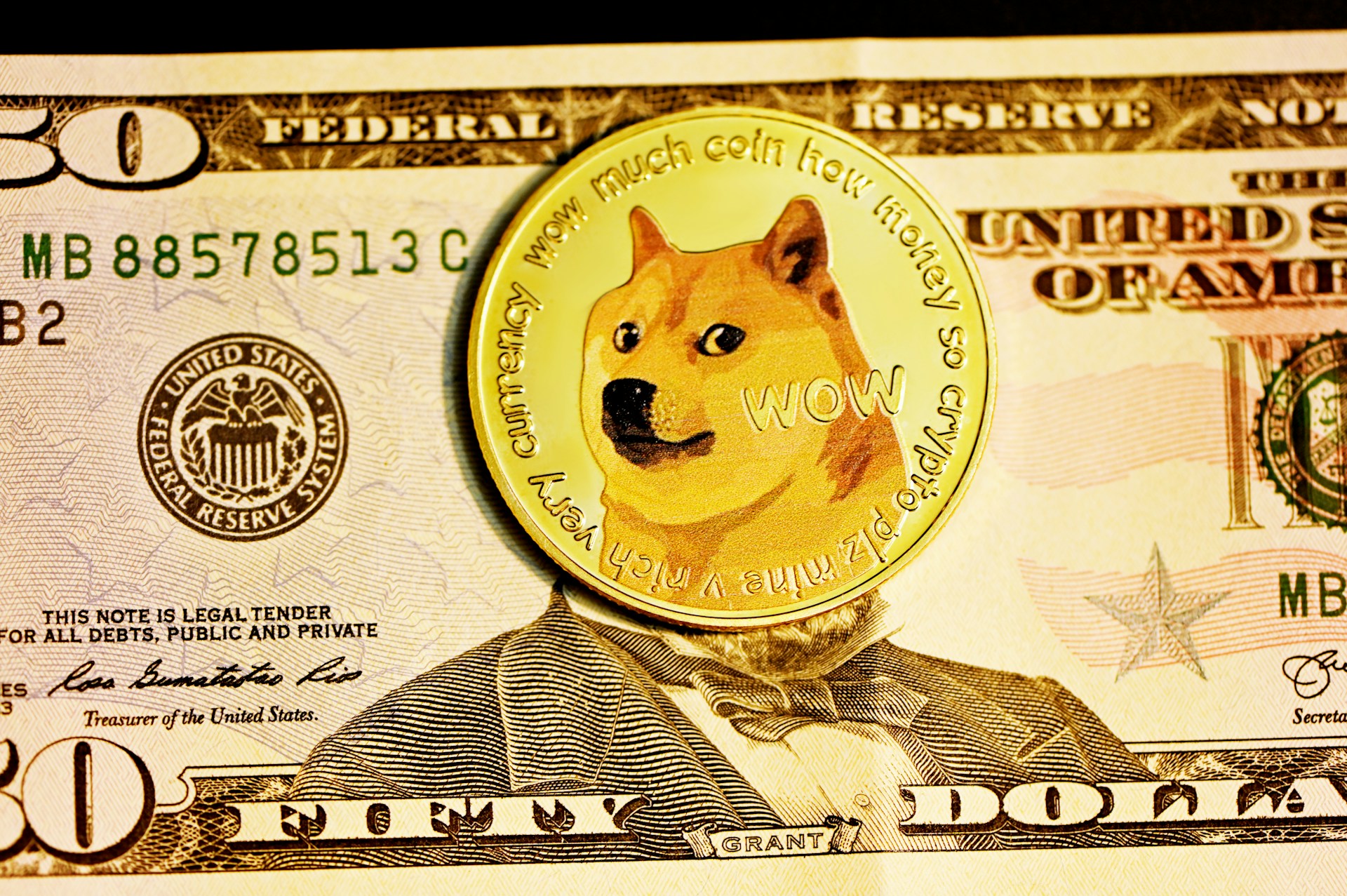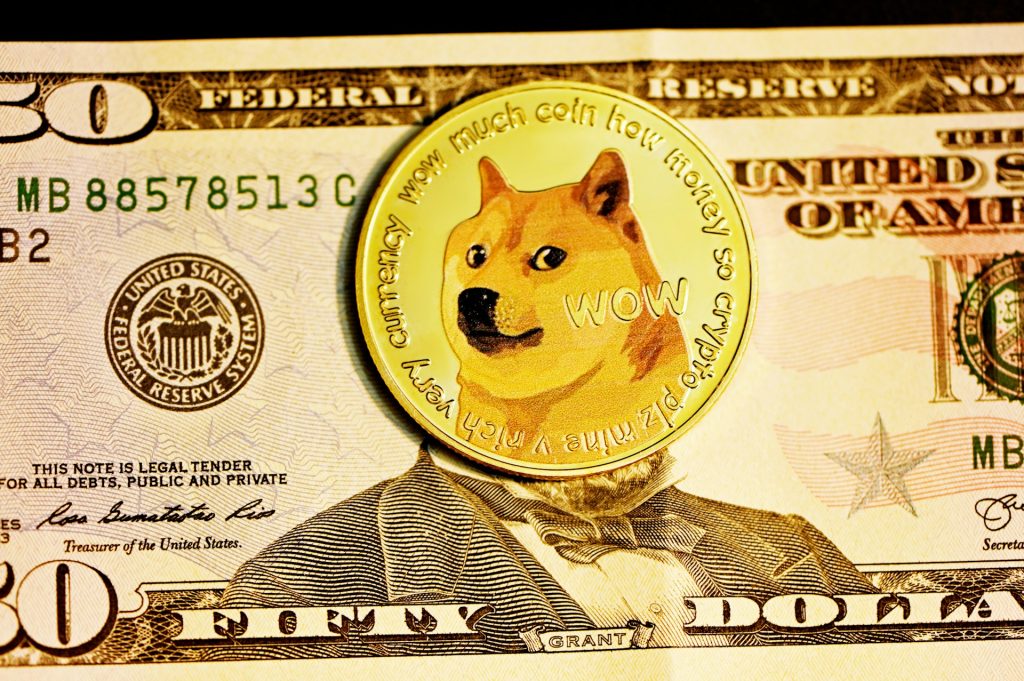Dogecoin’s transformation from internet meme to legitimate digital asset shows how community support and growing institutional acceptance can elevate playful tokens into serious crypto investments. As of early 2025, Dogecoin’s market capitalization hovers around $50 billion, ranking it consistently among the top 10 cryptocurrencies globally. However, it has since seen a correction placing it around the $30 billion mark, which is still considerable. This evolution shows how accessibility and widespread adoption can turn what began as a joke into a genuine financial instrument.

The Origins of Dogecoin: A Fun Crypto Experiment
Created in December 2013 by software engineers Billy Markus and Jackson Palmer, Dogecoin was designed as a lighthearted and approachable digital currency. The creators adopted the popular “Doge” meme, featuring a Shiba Inu, as the project’s mascot, branding it as the “fun and friendly internet currency.” With a focus on simplicity and community engagement, Dogecoin offered features like an unlimited coin supply and relatively fast transaction speeds. These choices, while unconventional at the time, helped the currency gain traction for everyday use and microtransactions – especially in online communities where tipping and casual exchanges were popular.
Celebrity Influence and Social Media Hype
Dogecoin’s trajectory changed when high-profile figures, particularly Tesla CEO Elon Musk, began endorsing the cryptocurrency on social media. Musk’s tweets consistently triggered massive price movements, with single posts capable of increasing Dogecoin’s value by 50% or more within hours. This celebrity influence reached its peak in early 2021 when sustained social media attention pushed Dogecoin’s market capitalization above $80 billion, making it temporarily the fifth-largest cryptocurrency. The “meme coin” gained additional legitimacy through various high-profile use cases, including funding the Jamaican bobsled team’s 2014 Winter Olympics participation and sponsoring NASCAR driver Josh Wise.
Buying Dogecoin at Bitcoin ATMs
The cryptocurrency’s accessibility improved as infrastructure developed to support mainstream adoption. Many Bitcoin ATM machines across the U.S. now support Dogecoin purchases, allowing users to buy this popular token quickly without needing complex exchange accounts or technical knowledge. This physical infrastructure bridges the gap between traditional cash transactions and digital currency ownership, making Dogecoin accessible to users who prefer in-person transactions or lack bank accounts for online exchanges. Bitcoin ATMs offering Dogecoin provide immediate access to the cryptocurrency using cash or debit cards, eliminating the lengthy verification processes required by many online platforms. This convenience factor has contributed to Dogecoin’s adoption among casual users and newcomers to cryptocurrency.
Growing Institutional Interest
The most significant validation of Dogecoin’s evolution came in January 2025 when Grayscale Investments launched the Grayscale Dogecoin Trust, offering institutional investors structured exposure to DOGE through a traditional investment vehicle. This development marked a watershed moment, with Grayscale’s head of product research stating that “Dogecoin has matured into a potentially powerful tool for promoting financial accessibility.” The trust’s launch coincided with several asset managers filing applications for Dogecoin exchange-traded funds (ETFs), including Bitwise’s official SEC filing. These institutional products provide regulated pathways for traditional investors to gain DOGE exposure without directly managing cryptocurrency wallets or private keys, potentially opening Dogecoin to pension funds, family offices, and other conservative investors.
Regulatory Considerations and Risks
Despite growing institutional acceptance, Dogecoin faces ongoing challenges that distinguish it from traditional assets. The cryptocurrency’s unlimited supply means continuous inflation, with approximately 5 billion new coins created annually. While this inflationary model supports transaction utility, it contrasts sharply with Bitcoin’s deflationary scarcity model, creating different investment dynamics.
Regulatory scrutiny is still a consideration, though the January 2025 SEC clarification that Dogecoin is not classified as a security reduced legal uncertainty for exchanges and investment products. However, the cryptocurrency’s price volatility and meme-driven price movements continue to be risks for institutional adoption. Market participants must balance Dogecoin’s proven community engagement and accessibility against its inherent speculative nature and unlimited token supply when considering it as a serious investment vehicle.
Tradersdna is a leading digital and social media platform for traders and investors. Tradersdna offers premiere resources for trading and investing education, digital resources for personal finance, market analysis and free trading guides. More about TradersDNA Features: What Does It Take to Become an Aggressive Trader? | Everything You Need to Know About White Label Trading Software | Advantages of Automated Forex Trading









